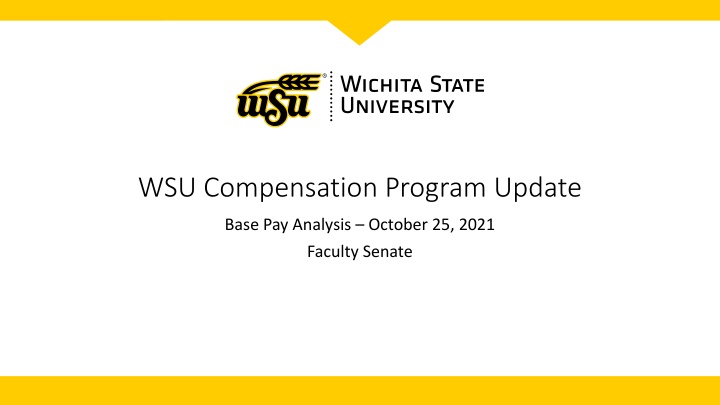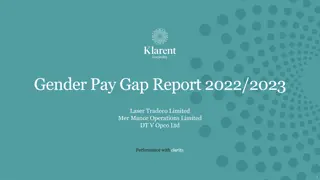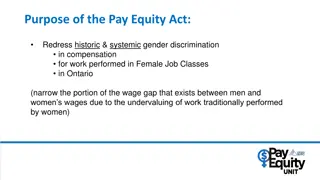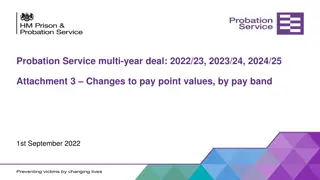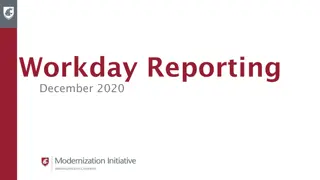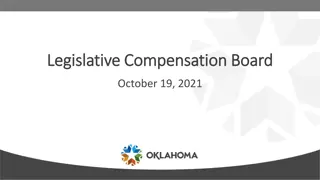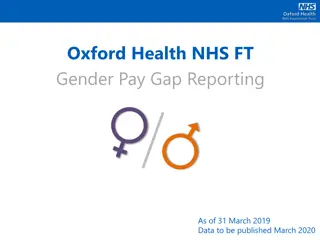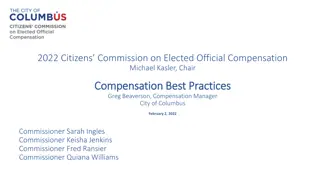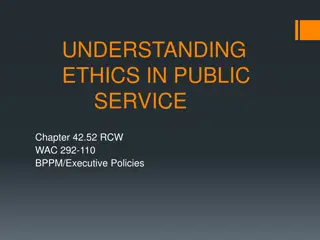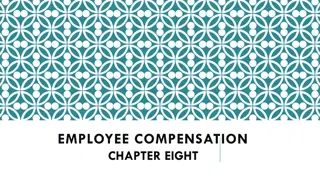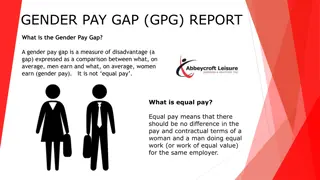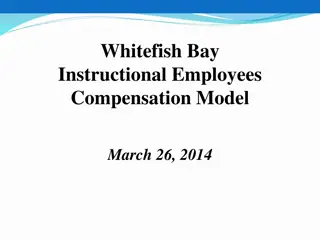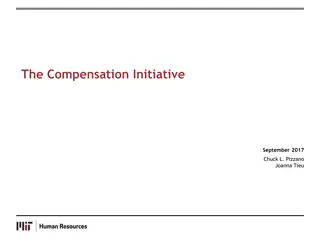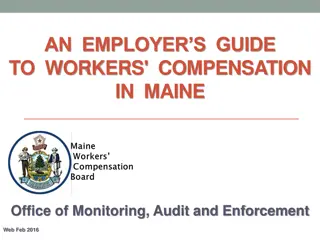WSU Compensation Program Update: Base Pay Analysis and Implementation Overview
The WSU Compensation Program Update involves steps like defining jobs, creating consistent job descriptions, mapping positions, comparing with external market data, and reviewing employee placement. Current status shows discrepancies in pay ranges for non-teaching and teaching positions. External market competitiveness and internal equity are crucial for base pay analysis. Next steps focus on a unified HR approach to address these issues.
Download Presentation

Please find below an Image/Link to download the presentation.
The content on the website is provided AS IS for your information and personal use only. It may not be sold, licensed, or shared on other websites without obtaining consent from the author.If you encounter any issues during the download, it is possible that the publisher has removed the file from their server.
You are allowed to download the files provided on this website for personal or commercial use, subject to the condition that they are used lawfully. All files are the property of their respective owners.
The content on the website is provided AS IS for your information and personal use only. It may not be sold, licensed, or shared on other websites without obtaining consent from the author.
E N D
Presentation Transcript
WSU Compensation Program Update Base Pay Analysis October 25, 2021 Faculty Senate
Compensation Program Implementation There are seven steps to complete the transition: (From Market-Based Pay Briefings in 2019, 2020 and 2021) 1. Define the jobs that are needed at the University 2. Create uniform and consistent Job Descriptions (JDs) that are placed in a catalog (referred to as a job catalog ) 3. Map the existing positions to the new catalog based on job duties 4. Compare each job to comparable jobs in external market, develop new compensation structure and assign pay range and FLSA exemption status. 5. Review each employee s experience and performance to assess placement within the assigned pay range 6. Implement compensation administrative guidelines 7. Budget dollars annually to implement pay changes
Current Status Non-Teaching Jobs: The University has completed the job architecture (consistent and uniform job descriptions/job catalog) and utilizing independent third-party survey data (external market) created 30 pay ranges which comprise the compensation structure. Each job has been assigned to a pay range with a minimum, midpoint and maximum 243 of 1,184 positions are currently paid less than the minimum of the assigned pay range Difference in current pay for 243 positions and the pay range minimum = $1,204,786 Note: The minimum of the pay range is a lower data point than the 25th percentile. 25th Percentile minimum of pay range
Current Status Teaching Positions (includes Tenure Track and Non-Tenure Track, as well as all Dean jobs) All positions have been matched to College and University Professional Association (CUPA) survey data (if available) with data points of 25th percentile, 50th percentile and 75th percentile 425 of 575 positions are paid less than the 25th percentile Difference in current base pay for 425 positions and the 25th percentile = $5,440,110 Note: The 25th percentile is a higher data point than the minimum of a pay range. 25th Percentile minimum of pay range
Current Status This information helps to determine relative market competitiveness in pay for jobs and is important in retaining current employees and recruiting new employees. It is focused on the value the external market assigns to a job. It does not factor in the internal equity by assessing the employee doing the job and what an expected base rate of pay would be given an individual s experience, performance and tenure. Both are needed for a comprehensive base pay analysis. Jobs Priced Jobs Priced External Market Competitiveness Employee experience, performance and tenure Internal Equity
Next Steps University priority requires unified approach to address HR: Conduct a base pay analysis Fall, 2021 to determine the expected base pay rate for each employee (in collaboration with supervisors). This, paired with the external market information will be complete by May, 2022 and used to prioritize base pay increases to occur FY23. Budget office: Partner with University administration during Fall, 2021 and Spring, 2022 to explore opportunities to identify existing budget dollars that can be used for pay increases. HR and Budget office: Evaluate options to address future base pay increases to resolve any gaps identified in the analysis.
